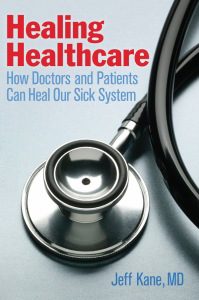
Today’s “opioid epidemic” is the widespread abuse of prescription painkillers like Oxycontin, codeine, and Fentanyl. Across the United States, a hundred people die daily from overdosing on these medications. This obviously needs addressing, so unsurprisingly, authorities have reflexively raised the War on Drugs flag.
The epidemic only concerns drugs, though, if it’s seen through the narrowest lens. In a wider view, it’s a sign of extensive hopelessness. If doctors curtail prescribing and some abusers clean up and go through rehab, fine, but the plague will continue because its victims aren’t wild-eyed, depraved addicts as much as fellow citizens in mortal pain.
I’ve learned in five decades of medical practice that some people take painkillers for a sore back and others for a sore life. So I’m dismayed that we focus exclusively on these chemicals while ignoring the people who take them. Hardly anyone asks, “Why do we need all these painkillers, anyway?” or, “Why is there more pain than ever in America?”
Users must hurt terribly to risk the notorious hazards of lethal overdose, legal troubles, and the misery of those who love them. Considering its likely consequences, we’d do better to think of opioid abuse as a category of suicide.
The doubling of suicide incidence in the United States since the 1980s bears instructive demographics. The poor have always had a rough go, but recently our perennially privileged class, white males, is being devastated as well. Today, whiteness and maleness are the two single greatest risk factors for suicide in the U.S. In fact, white, middle-aged men account for 70% of suicides each year.
Performed by whatever means, suicide results from despair. Nine-tenths of the people who attempt it or succeed are poorer than they’ve ever been, and tormented by unemployment and health concerns. Veterans are at greatest risk. According to a 2014 VA report, twenty commit suicide each day—more than we lose in combat.
The opioid epidemic, then, is actually one aspect of a broader suicide trend. Many sociologists see it as a consequence of the loss of the American Dream—the conviction that we “rugged individualists” can pull ourselves up by our own bootstraps, that we can make it through hard work and perseverance, that the Path to the Top is always available to the diligent, regardless of race, gender, or ethnicity, and that we can get there without relying on anyone else.
Two generations ago, the Dream was attainable. Entrepreneurship, earnestness, and determination could lead to solid employment, dependable income, benefits, vacations, and pensions. And dignity. Now it’s gone, and its faithful seekers, after self-reliantly striving for decades, end up confused and beyond disappointment. Having declined help and allies along the way, their solitary ethic rewards them with little more than anger and loneliness.
This is no minor phenomenon. Over 40% of adults in America report feeling lonely. The number of people who say they have close friends has been declining over the past few decades.
Though individual effort increasingly reveals itself to be futile, we tend to double down anyway, continuing to opt for individual over community life. A century ago we sat on the “front stoop,” chatting with neighbors; now we repair to darkened rooms to passively ingest television’s corporate swill. We aim to reside in gated “communities.” We drive opaque-windowed cars, and work in egg-carton cubicles. Even the so-called “one percent” disappear into their gold-plated cocoons, where they fall even further out of touch with the majority.
However centrifugally we act, we’re nevertheless hard-wired for some degree of contact. Unaccustomed to genuine community, we enact a parody of it by visiting social media, messaging those hundreds of “friends” we’ve never actually met. We can Tweet all we like, but 140 characters can’t convey more than shorthand. Only knee-to-knee contact can become heart-to-heart.
As a chronic condition, loneliness reliably generates both depression and physical illness. In case you don’t already know that, here’s a telling study: fifteen years ago researchers asked a large number of women suffering stage four breast cancer how many confidantes they had. (A confidante is defined as that friend to whom you comfortably tell your secrets.) They followed these women’s courses, and found their survival duration to correlate with their number of confidantes. Women with none died soonest, and those with the most lived longest.
Social interaction invariably includes “reality testing,” some version of, “Here’s what I think of things; what do you think?” Keeping us in the same book if not on the same page, reality testing is the glue of civilization. When we separate ourselves from others, we and society both begin to come unglued. What that can look like, in its early stages, is the opioid epidemic.
If our problem were truly just drug abuse, we could extend the perennial War On Drugs and pretend, as usual, to be addressing it. But opioids are only the balm of oblivion for those literally disabled by the loss of the American Dream. The Dream’s revival can come about only with a shift in our national character: we were raised to be strong, silent, and independent, but history tells us social progress requires people joining together.

Leave a Reply